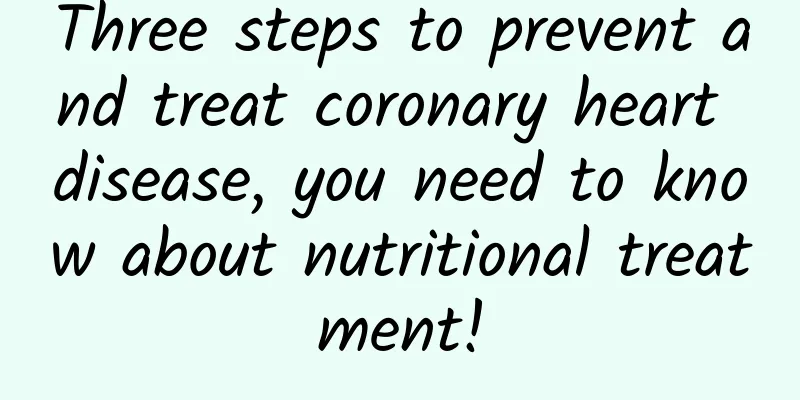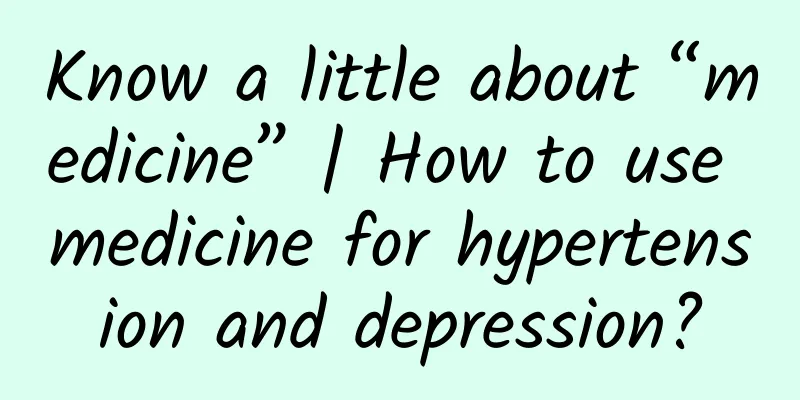Three steps to prevent and treat coronary heart disease, you need to know about nutritional treatment!

|
Coronary heart disease is known as the "number one killer of mankind". In recent years, the incidence and mortality of coronary heart disease among Chinese residents have shown an increasing trend, posing a great threat to the health of residents. Early prevention and early treatment are the key to preventing acute myocardial infarction and sudden death in patients with coronary heart disease. To prevent and treat coronary heart disease, the following three steps need to be taken.
1. Active diagnosis of high-risk groups The high-risk groups for coronary heart disease mainly include: hypertension, diabetes, dyslipidemia, obesity, long-term late nights, high work and life pressure, family history of coronary heart disease, lack of exercise, overeating, smoking and drinking, etc. For this high-risk group, it is necessary to pay attention to their health status at any time, and go to the hospital for treatment if they have symptoms such as chest tightness and shortness of breath. 2. Seek prompt treatment when symptoms occur The typical symptoms of coronary heart disease are chest pain and chest tightness, which can manifest as squeezing pain behind the sternum, accompanied by chest tightness, shortness of breath and other symptoms. Sometimes the patient's pain symptoms will radiate to the left shoulder, back, neck, chin, upper abdomen and other parts. In addition, when there is frequent accelerated heartbeat, arrhythmia, or accompanied by dizziness, tinnitus, and profuse sweating, you also need to be alert to coronary heart disease. Moreover, not all patients with coronary heart disease will have typical symptoms. Once chest tightness and chest pain occur, they should be admitted to the hospital as soon as possible to rule out coronary heart disease. If coronary heart disease is confirmed, timely treatment and intervention are required.
3. Long-term medication for confirmed patients As a chronic disease, coronary heart disease requires early and long-term treatment to control the progression of the disease. For coronary heart disease, taking medication consistently can protect the vascular endothelium and improve cardiovascular function. The earlier you take the medication, the more obvious the protective effect on cardiovascular function. Long-term medication can achieve a higher therapeutic effect. Therefore, to prevent coronary heart disease, you need to take medication consistently for a long time.
2. What are the nutritional treatments for coronary heart disease? 1. Limit cholesterol intake. Excessive intake of cholesterol can easily lead to dyslipidemia and increase the risk of coronary heart disease. Therefore, to prevent coronary heart disease, it is necessary to limit cholesterol intake. The daily intake of animal-derived cholesterol should be less than 300 mg. At the same time, reduce the intake of cholesterol-rich foods such as animal offal, skin, brain, and cream in the diet. 2. Limit total energy and maintain normal weight. The total daily energy intake of patients with coronary heart disease needs to be within the range of 25-30 kcal per kilogram of body weight. Keep the body weight within a reasonable range. The BMI value of adults should be maintained between 18.5-23.9 kg/m2, and the BMI value of the elderly should be maintained between 20.0-26.9 kg/m2. 3. Limit fat intake. Strictly limit the intake of trans fatty acids and saturated fatty acids. Saturated fatty acids mainly come from animal foods and margarine. It is recommended that the total amount of fat per day should not exceed 25% of the total energy, and saturated fatty acids should not exceed 7%. 4. Limit sodium intake and eat more vegetables and fruits. Excessive sodium intake can easily cause high blood pressure and increase the risk of coronary heart disease. Therefore, patients with coronary heart disease should eat a light diet, change their salty eating habits, and reduce the amount of salt, food additives and monosodium glutamate, which will help control the sodium intake in the diet. Sodium intake should be less than 5g per day. Increase the intake of fresh vegetables and fruits. 5. Adhere to a high-quality, low-protein diet. This means that on the basis of limiting the total amount of dietary protein (daily protein supply must be below 40g, or no more than 0.8g per kilogram per day, which can be adjusted according to the condition), more than 50% of it should be high-quality protein, namely animal protein and soy protein. At the same time, try to control foods rich in plant protein. Corn starch, water chestnut powder, lotus root powder, wheat starch, etc. can be used to replace part of the staple food. Taking lunch as an example, the total protein limit is 15g, and the high-quality protein cannot be less than 7.5g. For example, a high-quality low-protein diet can be: breakfast, fried radish cake (radish cake, protein content 1.7g/100g; vegetable oil, protein 0g), protein porridge (glutinous rice, protein content 3.9g/50g; egg white, protein content 4g/piece); lunch, two-piece rice (ordinary rice, protein content 4g/50g; low-protein rice, protein content 0.5g/50g), fried winter melon with meat slices (meat, protein content 10g/50g; winter melon, protein content 1g/250g; vegetable oil, protein content 0g); dinner, low-protein rice (low-protein rice, protein content 0.8g/75g), sweet potato (protein content 2g/100g), fried fish fillet (grass carp, protein content 8.3g/50g), lettuce (lettuce, protein content 3.5g/250g). The total protein is 40g, of which high-quality protein is 22.3g, accounting for about 55.8%. 6. Eat a variety of foods, mainly cereals. Patients with coronary heart disease should eat more whole grains, a combination of coarse and fine grains, and eat less monosaccharides, sucrose and sweets. Limit foods high in monosaccharides and disaccharides, such as desserts, various candies, ice cream, chocolate, honey, etc. 7. Limit alcohol consumption. It is generally believed that drinking a small amount of alcohol (referring to daily alcohol intake of 20-30g, or no more than 50g of liquor), especially wine, has a protective effect on coronary heart disease, but drinking as a preventive measure for coronary heart disease is not recommended. Therefore, patients with coronary heart disease still need to control their alcohol intake and limit their drinking.
Coronary heart disease is a common cardiovascular disease. Early detection and early treatment are the key to preventing coronary heart disease. The prevention and treatment of coronary heart disease should be achieved through three steps: active diagnosis of high-risk groups, timely treatment of symptoms, and long-term medication for confirmed groups. At the same time, in the prevention and treatment of coronary heart disease, it is necessary to focus on nutritional treatment, develop good eating habits, and improve the prevention and treatment effect. |
>>: Confessions from a patient with depression: For whom is my heart closed and opened?
Recommend
Can I breastfeed if I have a fever?
During breastfeeding, mothers are usually most wo...
What happens if a polyp grows at the male urethra?
Polyps are a common disease in life because they ...
My breasts are too big.
Breasts are important organs of women. Women with...
Why don't pineapple flowers bloom? How to grow pineapple flowers to make them bloom vigorously?
Pineapple flowers are very common in life, but ma...
What is the treatment for low estrogen and thin endometrium?
Nowadays, the pressure of survival is getting gre...
Can women eat durian during menstruation?
Women will have their menstrual period every mont...
What to eat during menstrual period to detoxify and remove blood
Menstruation is a good period for body detoxifica...
What are the symptoms of premenopause in women?
Puberty represents the onset of menarche in girls...
Will it hurt to remove stitches after childbirth?
Nowadays, most medical sutures are made of air-ox...
Protecting the uterus should start from five aspects
No matter what disease it is, it can be prevented...
There are white pustules on the vulva
Some women find that some pustules suddenly grow ...
Is it necessary to have a hysterectomy for uterine fibroids?
Having uterine fibroids is already very unfortuna...
A little bit of blood a few days before menstruation
If a few days before menstruation, a sudden littl...
How many kinds of fruits should pregnant women eat a day
Pregnancy is a special period, especially in some...
Does black wolfberry contain estrogen?
Does black wolfberry contain estrogen? Estrogen i...









